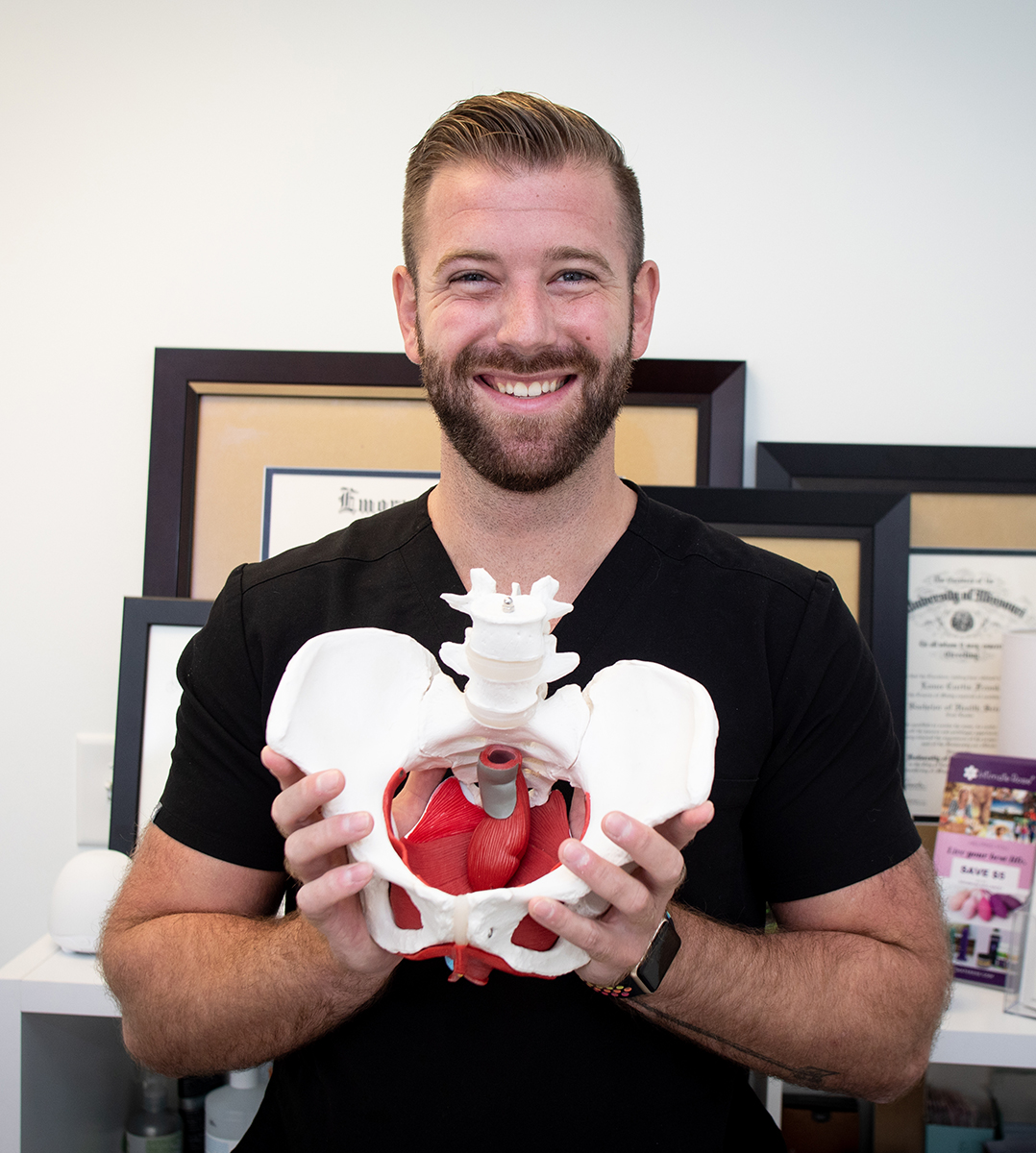As a pelvic health physical therapist, I often see people after they’ve visited countless other healthcare providers who have completely overlooked the musculoskeletal system, or even worse, have little or no knowledge about how it can impact basic pelvic floor function. As they sit in my office and we begin to talk about their symptoms, I often hear them say things like:
- “So what exactly is pelvic health PT?”
- “Are we just going to do some Kegels?”
- “I had no idea this is a ‘thing’”
- “I wish I would have known about this sooner!”
Pelvic health isn’t a new type of physical therapy, however it is finally gaining some traction in the medical community, and even more-so in the health and wellness industry. Physicians are now realizing that it’s not just for pregnant and postpartum moms. Pelvic health is for people of all genders, ages, and activity levels. Everyone has a pelvis, and therefore we all could benefit from better pelvic health.
Pelvic health is an area of specialty within the field of physical therapy. It is typically not a significant part of a physical therapist’s education. Rather it is a specialization requiring much further study, training, and practice following graduation from PT school. A pelvic health physical therapist holds both a doctorate degree in physical therapy as well as advanced credentials in the assessment and treatment of people with diagnoses that involve the pelvic floor musculature. Some pelvic health physical therapists take their education a step further by specializing in pediatrics, pregnancy and postpartum care, women’s health and/or men’s health. Having this additional knowledge gives the therapist an even greater understanding of how to go beyond the pelvic floor to help patients from head to toe.
The pelvic floor is made up of muscles and fascia that form a sling spanning across the bottom of your pelvis. It consists of 14 muscles in people with female genitalia, and 12 muscles in those with male genitalia. All of these muscles, in combination with your “core” (think abdominal wall muscles and diaphragm), must be functioning properly to ensure a healthy pelvis. Together they provide a foundation to the pelvic musculoskeletal structure for upright posture, support of your internal organs, and help with regulating urinary and bowel functions, as well as sexual function (penetration, erections, ejaculation, and orgasm).
Just like any other muscle in your body, the pelvic floor muscles can succumb to injury. And, similar to a torn ACL or a rotator cuff injury, the pelvic floor also responds very well to strength training or vice versa, to downtraining and relaxation.
Pelvic Floor Dysfunction is defined as an impaired ability to control (tighten and relax) your pelvic floor muscles. It can happen for a number of reasons, such as stress, surgery, pregnancy, childbirth, inactivity, and cancer/radiation related dysfunction. Some common symptoms include:
- Pelvic pain (includes the vagina/vulva, perineum, anus, penis, testicles/scrotum)
- Sudden urges to urinate
- Leaking with exercise, laughing, coughing, or sneezing
- Frequent or painful urination
- Urinary retention
- Constipation
- Fissures, hemorrhoids, or painful bowel movements
- Painful penetration
- Abdominal or low back pain
- Pelvic pressure and heaviness
- Erectile dysfunction
- Premature ejaculation
- Painful ejaculation or orgasms
While these symptoms are common, they are absolutely not normal and could be a sign of pelvic floor dysfunction. A physical therapist can help determine if you have this, based on your symptoms and the findings of a pelvic exam and movement screen.
Having a qualified physical therapist by your side who fully understands the relationship between your pelvic floor and how the body moves as a whole is key to attaining optimal pelvic health. Through a comprehensive assessment, I search for the underlying source of your musculoskeletal and movement limitations. I assess your symptoms and objective impairments to create a treatment plan personalized for you and your specific needs and goals. From there, each session is guided to ensure symptom reduction and goal-oriented success. I go beyond the symptoms and look at your whole body to help you recover from pain and injury, and safely return to a fulfilling life of sport, activity and wellness.
Each pelvic health treatment session is private and typically one hour long. They include a variety of skilled methods such as manual therapy, including internal and/or external mobilization techniques depending on your diagnosis. Some examples of manual therapy I employ include soft tissue and joint mobilizations, trigger point release, dry needling, and connective tissue manipulation. Treatments may also involve neuromuscular re-education and activation exercises with tools like Pilates, therapeutic exercise for general strengthening, breathing and relaxation techniques for downtraining, self-care techniques for management of symptoms at home, as well as education regarding anatomy, physiology, neural connections, and pain science. Your plan of care is established after the initial evaluation, and based on your diagnosis and complexity of symptoms.
If you’re having any of these symptoms or if any of the content in this post resonates with you, I strongly encourage you to schedule a phone consultation with me. You don’t have to suffer alone in silence. I’ve heard it before and help is possible!

